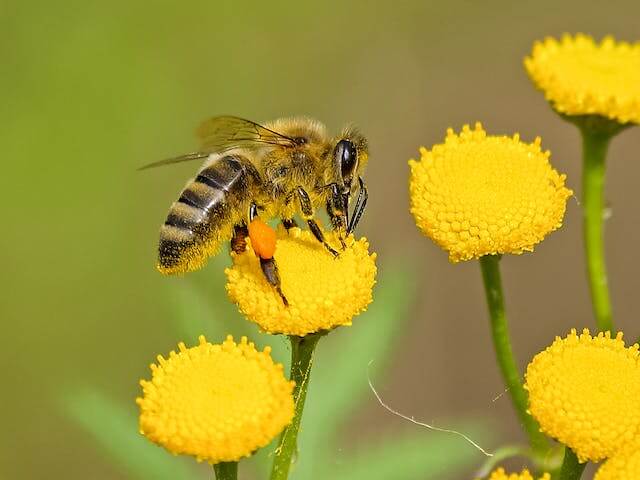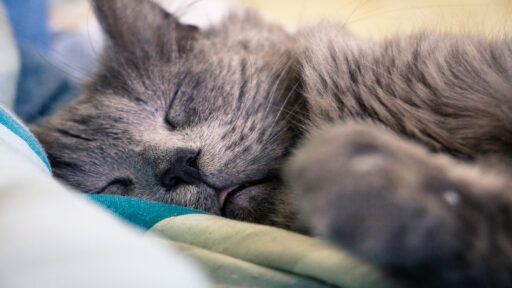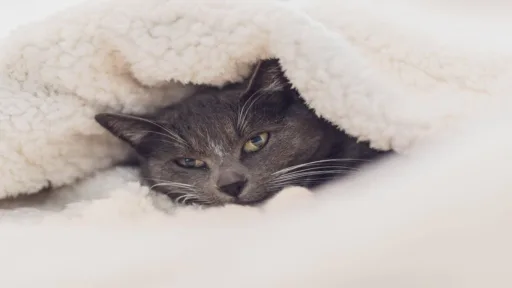What does a bee sting look like in a cat?
If a cat is stung by a bee, it’s essential to observe them for any signs of distress or allergic reaction.
If the cat shows signs of severe distress, difficulty breathing, extensive swelling, or any allergic reactions, seek immediate veterinary care.
A bee sting on a cat usually appears as a localized swelling or redness at the site where the sting occurred.
It might be a raised area, often tender or painful to the touch.
In some cases, you might see a small puncture wound, a red mark; where the bee stinger entered the skin.
The affected area can be itchy and might cause your cat discomfort or irritation.
If you notice any signs of a bee sting on your cat,
it’s essential to monitor for any allergic reactions or worsening symptoms.
Cat stung by bee – Reactions
When a cat stung by a bee, it’s important to watch for various signs of reactions :
- Localized Swelling:
The area around the sting can swell and become sensitive.
This is a common reaction and often resolves within a day or two. - Pain or Discomfort:
Cats might experience discomfort or pain at the sting site.
leading to licking, scratching, or pawing at the area. - Redness and Irritation:
The skin around the sting can turn red.
this might be itchy due to the cat’s reaction to the bee’s venom. - Allergic Reactions: In some cases, cats might have allergic reactions leading to more severe symptoms like extensive swelling, breathing difficulties, vomiting, or collapse. These cases require immediate veterinary attention.
- Secondary Issues: Excessive licking or scratching of the sting site can introduce bacteria, leading to a risk of infection. Look for signs of pus, increased swelling, or warmth around the area.
In the end, if your cat displays mild symptoms, you can clean the area with mild soap and water, apply a cold compress to reduce swelling or use a mixture of baking soda and water to alleviate discomfort.
for any signs of an allergic reaction or worsening symptoms, it’s crucial to consult a veterinarian promptly for proper evaluation and treatment.
Cat stung by bee – Side effects

Side effects if a cat stung by a bee can manifest in various ways:
- Local Reactions: This includes redness, swelling, and pain at the sting site. The area may become tender and may be accompanied by some discomfort or itchiness.
- Systemic Reactions: In some cases, cats can experience more severe reactions throughout their body. This might include generalized swelling, difficulty breathing, vomiting, diarrhea, weakness, or collapse.
- Allergic Responses: Allergic reactions can occur, ranging from mild to severe. Symptoms might include hives, extensive swelling, breathing difficulties, or anaphylaxis; These severe reactions are rare but require immediate veterinary attention.
- Behavioral Changes: Cats might exhibit behavioral changes such as restlessness, agitation, or hiding due to discomfort or pain.
- Secondary Infections: If the cat excessively licks or scratches the sting site, it can lead to secondary infections. Watch for signs of increased swelling, pus, or warmth around the area.
It’s crucial to monitor your cat closely after a bee sting. If you notice any signs of a severe allergic reaction or if your cat’s behavior or condition seems concerning, seek immediate veterinary care. Mild reactions can often be managed at home with basic first aid, but any signs of a systemic or severe reaction warrant professional attention.
How to readuce the pain ?
- Cold Compress: Apply a cold compress wrapped in a cloth to the sting area for 10-15 minutes. This can help reduce swelling and alleviate some of the discomfort.
- Baking Soda Paste: Mix a small amount of baking soda with water to create a paste. Gently apply this paste to the sting area. It can help neutralize the acidic venom and soothe the pain.
- Topical Ointments: There are pet-safe topical ointments available that can help alleviate discomfort. Consult with your veterinarian for recommendations on suitable products.
- Antihistamines: Your vet might recommend a mild antihistamine, but never administer medication to your cat without consulting a vet first. The dosage and type of medication should be advised by a professional.
- Keep the Area Clean: Ensure the area remains clean to prevent any secondary infections. Use mild soap and water to gently clean the sting site if necessary.
Here are a few more tips to help alleviate pain from a bee sting on a cat:
- Aloe Vera Gel: Applying a small amount of pure aloe vera gel to the sting area can have a soothing effect. Ensure it’s pure aloe vera without added ingredients that might be harmful to cats.
- Veterinary Consultation: Your vet can recommend or prescribe pain-relieving medication suitable for cats. They might suggest nonsteroidal anti-inflammatory drugs (NSAIDs) or other pain relief options.
- Elevate and Rest: Encourage your cat to rest and elevate the affected area, if possible. Limit their movement to prevent further irritation.
- Comfortable Environment: Create a comfortable and quiet environment for your cat. Providing a cozy spot where they feel safe and secure can help reduce stress, which might contribute to pain perception.
- Monitor and Patience: Keep a close eye on your cat’s behavior and the sting site. Monitor for any changes, and be patient as it might take time for the discomfort to subside.
Always prioritize your cat’s comfort and well-being. If the pain persists or if you notice any signs of severe reaction, such as excessive swelling, difficulty breathing, or significant distress, seek immediate veterinary care.
Cat stung by Bee – no more danger
Ensuring there’s no more danger after a bee sting on your cat involves monitoring their condition and taking a few precautions:
- Observation: Watch your cat closely for any signs of distress, allergic reactions, or worsening symptoms. Monitor the sting site for changes in swelling, redness, or discharge.
- Consult a Veterinarian: If you’re unsure or concerned about your cat’s condition, consult a veterinarian. They can assess your cat’s health and guide whether further treatment or observation is necessary.
- Follow-up Care: Follow any instructions given by your vet regarding medications, home care, or scheduled follow-up visits. This ensures that your cat’s recovery is progressing as expected.
- Preventive Measures: Take steps to prevent future bee stings by keeping your cat indoors during peak bee activity times, if possible. You can also check your surroundings for beehives or areas where bees might frequent and try to limit your cat’s access to those areas.
- Emergency Preparedness: Be prepared for emergencies. Know the location and contact information for emergency veterinary services in case your cat experiences a severe reaction to a bee sting in the future.
Regular monitoring of your cat’s behavior and health, along with proactive measures to prevent bee stings, can help ensure their safety and well-being. If there’s any doubt about your cat’s condition or if you notice concerning symptoms, seek professional veterinary advice promptly.
Cat stung by a bee – Protection

Protecting your cat from bee stings involves some precautions:
These measures can help minimize the risk of your cat encountering bees and getting stung. However, it’s impossible to eliminate the chance of a sting, so being aware and prepared for such situations is also important.
- Limit Outdoor Exposure: During times when bees are active, like warm and sunny days, consider keeping your cat indoors. Bees are more prevalent around flowers, so be cautious if your cat has access to gardens or areas with flowering plants.
- Regular Inspection: Check your yard or surroundings for beehives or areas where bees frequently gather. If you spot a hive or notice a significant bee presence, try to limit your cat’s access to those areas.
- Pet-Safe Repellents: Consider using pet-safe insect repellents or natural deterrents to discourage bees from your cat’s immediate environment. Consult with your veterinarian for suitable options.
- Avoid Sweet Smells: Bees are attracted to sweet scents. Avoid using heavily scented products around your cat, as this might attract bees.
- Supervision: If your cat is outdoors, supervise them closely. Keep an eye on their activities and surroundings to intervene if they approach areas with bees or show interest in chasing insects.
These measures can help minimize the risk
- Education: Teach children or family members to be cautious around bees and to avoid disturbing them, especially when the cat is nearby.
- Trim Bushes and Shrubs: Keep your garden well-maintained by trimming bushes and shrubs regularly. This reduces potential hiding spots for bees and makes it less likely for your cat to accidentally disturb them.
- Avoid Attracting Bees: Certain scents and items can attract bees. Avoid leaving out uncovered food or sweet-smelling items, like open soda cans or exposed pet food, as these might attract bees to your cat’s area.
- Consider Protective Clothing: If your cat is prone to exploring areas with a high bee presence, consider protective clothing options such as specialized cat vests or jackets designed to deter insects. These are made of materials that are less likely to attract bees.
- Be Aware of Surroundings: When walking your cat on a leash or allowing outdoor access, be mindful of your surroundings. Steer clear of areas with heavy bee activity and keep your cat away from flowering plants or areas where bees are gathering.
- Emergency Preparedness: Be prepared in case your cat does get stung. Have a plan in place and know the location of emergency veterinary services in case your cat has an allergic reaction to a bee sting.
These precautions aim to minimize the chances of your cat encountering bees and getting stung. more than that, ensuring your cat’s safety also involves being vigilant and prepared for any unexpected situations.
Can a bee sting make me lose my cat?
While it’s rare, that a bee sting can be dangerous and, in extreme cases, fatal to a cat, besides if they have an allergic reaction; Most cats will experience localized swelling and discomfort from a bee sting, which usually resolves without severe complications.
Moreover, in some instances, cats can be highly allergic to bee venom, leading to anaphylaxis, a severe and potentially life-threatening allergic reaction. Signs of a severe allergic reaction to a bee sting in cats may include extensive swelling, difficulty breathing, vomiting, diarrhea, weakness, collapse, or seizures.
If you suspect your cat has been stung and is displaying any of these severe symptoms, it’s crucial to seek immediate veterinary care. Prompt treatment can make a significant difference in managing an allergic reaction and ensuring your cat’s safety.
Cat stung by a bee – one last advice!
Firstly even if the initial symptoms of the bee sting appear mild,
Secondly it’s wise to seek veterinary advice,
Thirdly if your cat has a history of allergic reactions; if you’re unsure of the severity of the sting.
Finally Early intervention can prevent complications and ensure your cat’s well-being.
veterinary




